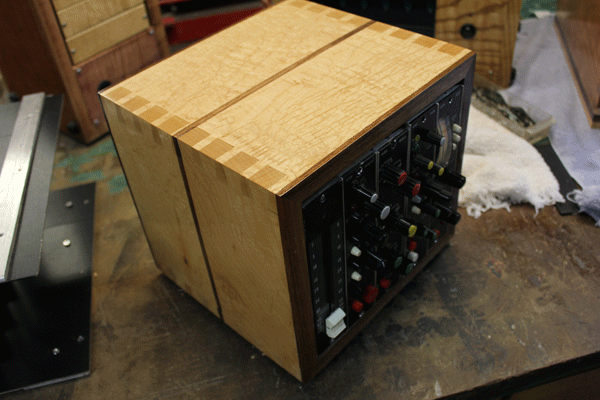In 2005 I was in the process of setting up my personal, ProTools-based home/project studio. Having been cursed (blessed?) with the ability to hear the difference between good quality sound reproduction equipment and junk, I decided it was important to find peripherals that would allow me to make sounds I could enjoy. However, the really high quality mic-pre-amps, equalizers, and compressors I lusted after: the Neve, Great River, API, and so forth were all a bit out of my price range.
Enjoying research, I began collecting and parsing all the information-both analytical and anecdotal-I could find on older channel strips and various modules that began life as pieces of large-format recording or broadcasting consoles. Eventually I bought a pair of Ward Beck input modules.
The decision to try the WBS units was based upon several considerations: most everyone who had some agreed that they sound very good and, at least as important; there was a web site devoted to maintaining, restoring, and generally preserving these fine pieces of equipment: The Ward-Beck Systems Preservation Society. Several kind and knowledgeable folks there answered the many, many questions that arose while learning the ropes as it were. Particular thanks to Anthony P.K., Dave Thomas, Tristan Miller, and Warren Beck.
A number of other extremely generous folks all over the world were willing to lend a helpful ear and wise counsel about everything from power supplies to various tricks for modifying specific units from various makers. Joe Malone at JLM Audio has repeatedly been willing to spend time answering questions as has Rob at Pro Harmonic Audio. More recently, Chris at Preservation Sound has been patiently introducing me to the basics of tube gear as I muddle through yet another set of learning processes. Thank you all.
For most of my adult life I have worked with wood in one way or another: from building musical instruments to building houses. As I became more adept at turning old channel strips and the like into useful and great sounding studio pieces, I decided to integrate my love of woodworking and the new electronics obsession.
I began building hardwood cabinets to house the electronics: the first ones were simple, yet elegant butt-joint boxes; then splined and mitered cabinets; and finally lovely dovetailed studio furniture.
My business philosophy, as it were, will never make me wealthy, but I have no trouble sleeping at night. I like to build things that look and sound great and I like to do it at a reasonable cost.
Life is too short to use bad sounding equipment.
Best,
Dr. Tom
